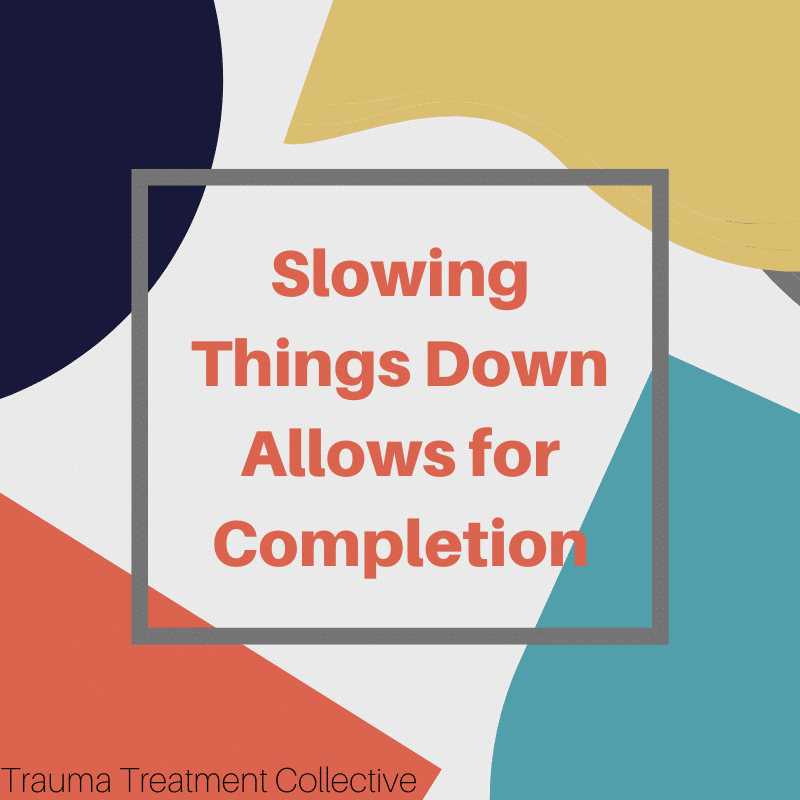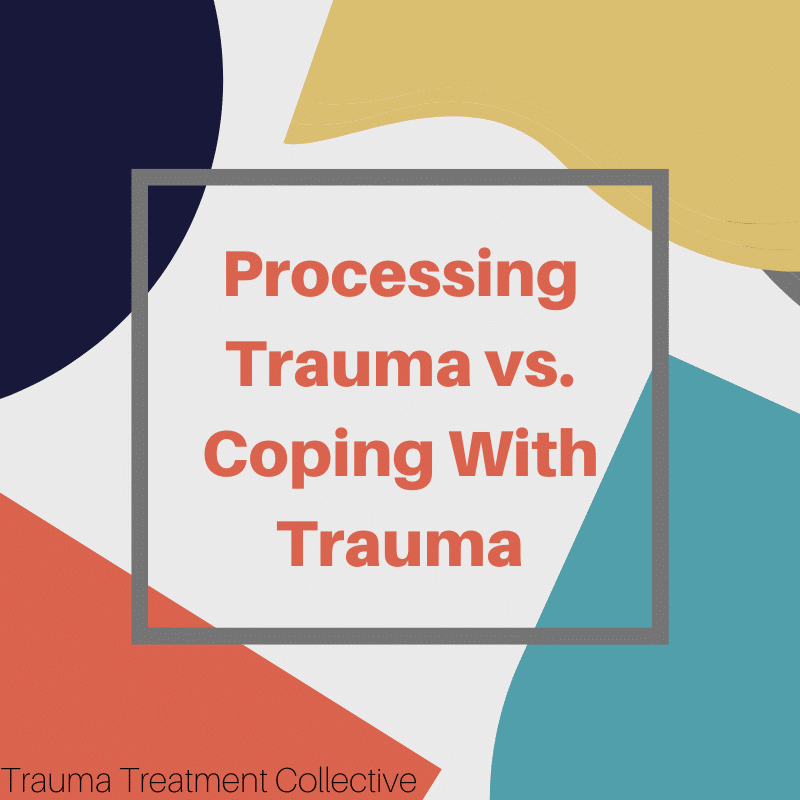The processing phase of treatment is the phase that helps a client bring coherence to their story and within their nervous system. This particular phase should come after safety and stabilization have been established with a client in their treatment journey. In order for clients to effectively process their trauma, it is vital that they have a sense of safety established and also have strong stabilization skills. Having these two things in place helps clients better navigate through the activation that is associated with working through their trauma histories in the processing phase of treatment.

Let’s start by establishing that all trauma is not equal when it comes to the modality used in the processing phase. One of the main ways I have come to categorize modalities is thinking about the structure of the brain. Now there are some who disagree with the triune brain theory, so we won’t get into that, but we will think about the top of the brain, prefrontal cortex, and the bottom of the brain (the brain stem).
Bottom up and top down are both common terms that you might hear in trauma treatment circles. What does it all mean? In the simplest language, it refers to the part of the brain stimulated by the intervention used with a client.
The first thing I think we should discuss is that our brains develop from the bottom to the top. This means that while in utero, our reptilian portion (also known as the bottom part of our brain) develops first. This is where our automatic body functions and threat response live. The brain continues to develop into early adulthood. The final portion to develop is the top part of the brain. The top of the brain is called the neocortex, also known as the thinking brain.
When you think about interventions or modalities that are top down, they are interventions that stimulate the thinking brain first. These are cognitive-based interventions and modalities. I use these modalities and interventions when working with a logical person or a person who finds it easy to process information using words.
Bottom up interventions and modalities use the five senses as well as body sensations to process trauma. I like to use these interventions when the trauma is preverbal or more chronic in nature. By taking the time to consider the type of trauma as I am choosing the most effective modality, I am creating the best healing environment possible for my client.
Next, let’s talk about how hard it is for clients to move from talking about their trauma to the processing phase. We have all probably had a client that seems to want to share the story of their trauma, but you find it hard to actually help them move through that story in a healing way. One of the most helpful ways of helping your client process their trauma versus talking about it is to see their experience as something smashed together and all jumbled up. Your goal in the processing phase of treatment would be to pull things apart and be curious about the needs of your client and emotions as all different parts are pulled apart.

When we’re able to help clients look at the smaller parts and be with them, then we are truly able to bring completion to incomplete defense responses, move emotions though, meet unmet needs, and anything else that might need to happen. I often will say to my clients, “let’s freeze frame there, and just look at this one part of your experience.”
Here’s a good sign that a client is just talking about their trauma: it feels as if they are telling a story. For some clients, this can be the first time they have felt heard and seen. The main thing to look for when a client is talking about their trauma is to ensure they are not overwhelming themselves. This could put the client at risk of retraumatization.
You may have heard me say before, “don’t be afraid to interrupt a client.” I think that statement is most true in the processing phase.

Lastly, I would encourage you to consider if your client is really interested in processing their trauma. Maybe they are coming to you to learn to cope with their symptoms, but they are not interested in actually processing.
Let’s talk about my definitions of these two words. I like to think of coping as the ability to learn to manage big emotions, strong activation, and trauma triggers. Whereas when I think of healing, it is working with the roots and residue of the trauma by meeting the unmet needs, discharging the energy, and reorganizing the system in a way that allows more flexibility, fluidity, and safety to come online. When a client is moving towards healing from their trauma, there is not as much need for coping.
I think it is also important to mention that all clients don’t want to move from coping to healing. Some clients are relieved to learn to manage symptoms. Also some clients don’t know that something else is possible beyond learning to manage the symptoms. Does this mean they are missing out? Absolutely not. Sometimes we are a part of people’s journeys for a season, not to see them to the final destination. Or maybe coping is their final destination.
It is important to have a conversation with the client about if and how you see the two being different so they can make an informed decision about where they want to take their journey.
There you have it – three things I would encourage you to consider when you are thinking about the processing phase of trauma treatment. Knowing which modality to use for what type of trauma you are treating is vital. Then take the time to slow your client down to ensure they are processing the trauma versus talking about it. And lastly, ensure that your client’s goals align with moving into the processing phase. Sometimes clients are only interested in learning to cope with their symptoms. Properly setting up and managing the processing phase of treatment is key to effective trauma treatment.

